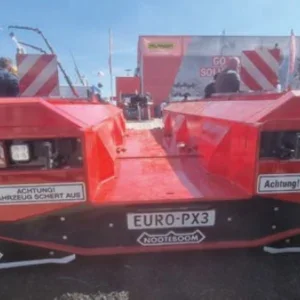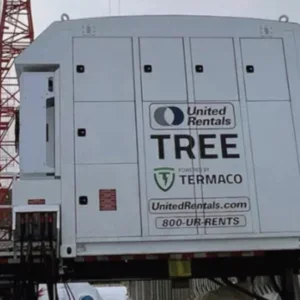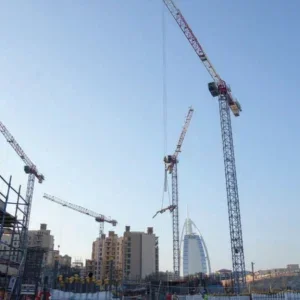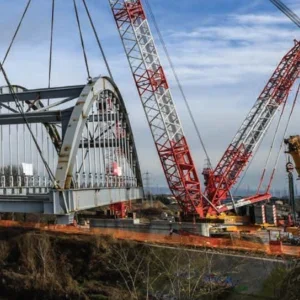Hiab has made a significant investment in product development since the launch of the XS-series loader crane four years ago.
Indeed, the company is replacing its entire product range – about 40 models in all – with ‘XS’ models, with each XS model covering at least two older models thanks to a wider capacity span.
The investment programme will be completed in about two years.
Harm-Jan Riksen, the company’s marketing communication manager, explains: ‘If you consider that we are launching new models at a rate of three or four a year, and compare that with the car industry, you’ll agree that we’re not doing so badly. You also have to take into account that Hiab doesn’t rely on laboratory tests only. Each crane model is field tested intensively by professional crane drivers before being released to the market, and these field tests take a lot of time.’
Ricksen believes there is still a huge range of features remaining to be developed in the controlling of the crane. ‘Better control systems add more lifting capacity to the steel frames. You have to find the balance between the dynamics and the capacity. So our main development area at the moment is more sophisticated control systems.’
Hiab claims the introduction of two new regulatory norms – EN 12999 (security norm especially for truck-loaders) and EN 13001 (calculation norm) – has also helped its business.
This, it says, is because it has always followed the stricter interpretation of the former directives while its competitors didn’t. ‘This,’ it says, ‘made for a cost difference that was confusing to customers, but with the introduction of EN 12999, Hiab’s competitors were suddenly in the situation of having to catch up in the matter of compliance’.
Riksen believes the introduction of EN 13001 is even better. ‘It is a very strict and complex norm on calculating the strength of your construction, but it offers opportunities.
‘With the old norm you had to look at worst-case scenarios, but hardly any cranes are used that way. Under the new norm, we can construct a crane according to the real situation, but the question then becomes: How do you monitor the way in which customers use a crane? We have a solution for that now, which we apply on all cranes except for the Classic.’
The Hiab system measures how the levers are used by the operators, and when it establishes that the crane is not being used to the maximum, it increases the capacity of the crane by 10 per cent.
‘For example,’ says Riksen, ‘using the crane to dig is one of the worst-case scenarios, so the crane does it at standard capacity, but as soon as you stop digging the onboard computer automatically gives you an extra 10 per cent capacity.’
In the coming year, Riksen sees Hiab working more closely with truck manufacturers. ‘At the moment, we have to mount the product onto the truck after the truck has been completed. This takes about two weeks, and you need a sub-frame to be able to mount the crane. This adds time and costs, but so far it has not been something we had any control over. For the future, we see no reason why we shouldn’t fit the crane while the truck is still in the factory.’
An early example of something along these lines can be seen at Scania. At the end of 2003, Scania received an order from the Dutch army for 533 Scania 8×8 vehicles with Multilift TSH 230 hooklift systems for handling containers and flat racks. A number of the vehicles will also be equipped with Hiab 102S loader cranes. The first vehicles were delivered last year, and the order is scheduled for completion early in 2006.
This order also includes bodybuilding and installation from Hiab, which will require the company to set up of a new installation line in its premises in the Netherlands, although some hydraulic and electric components are installed on the assembly line of the Scania factory in Zwolle.
Ricksen has high hopes of setting another sales volume record in 2005 with new models planned including the XS 099, XS 244, and XS 322. Also coming out in the spring will be a new remote control system.






